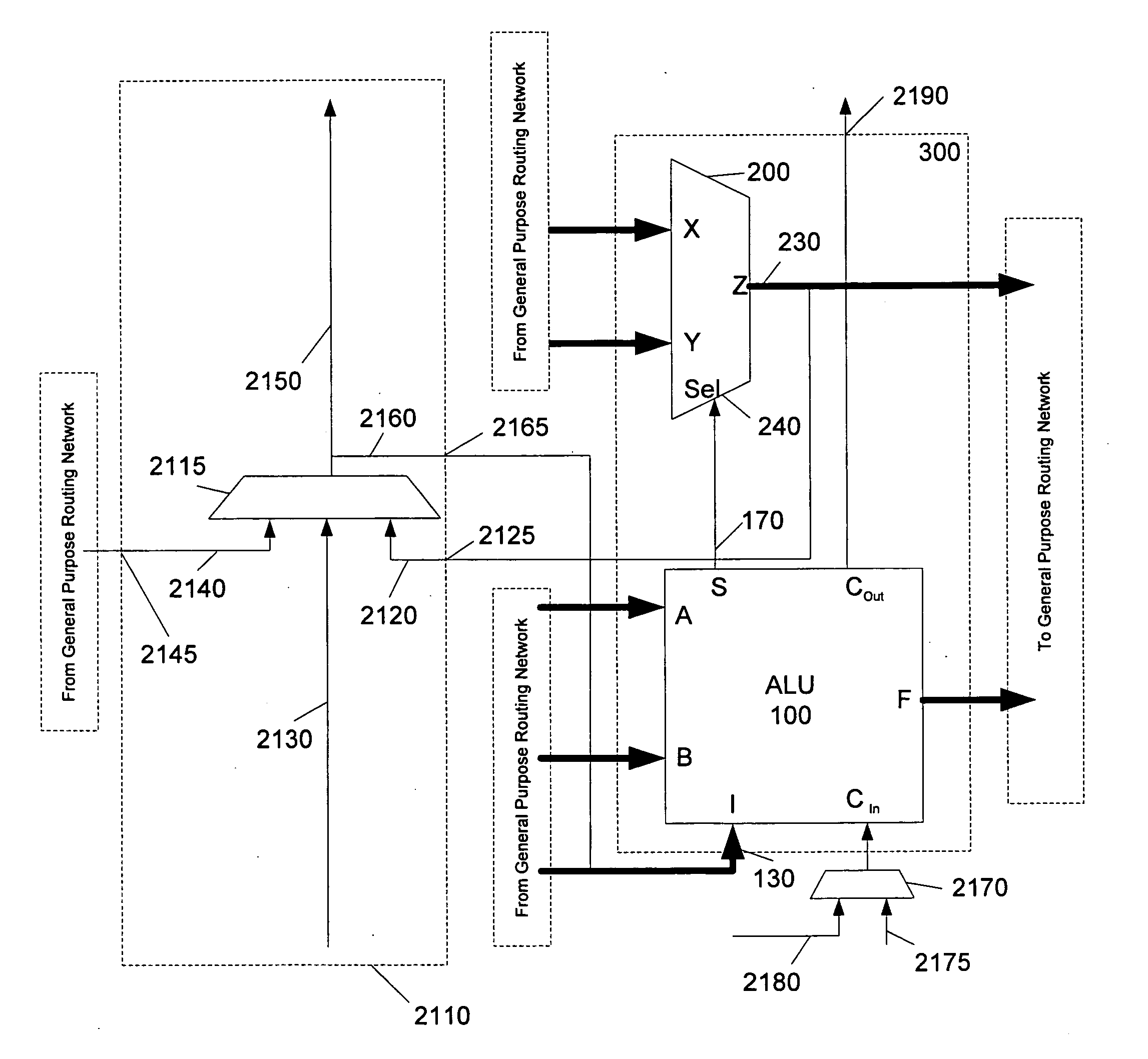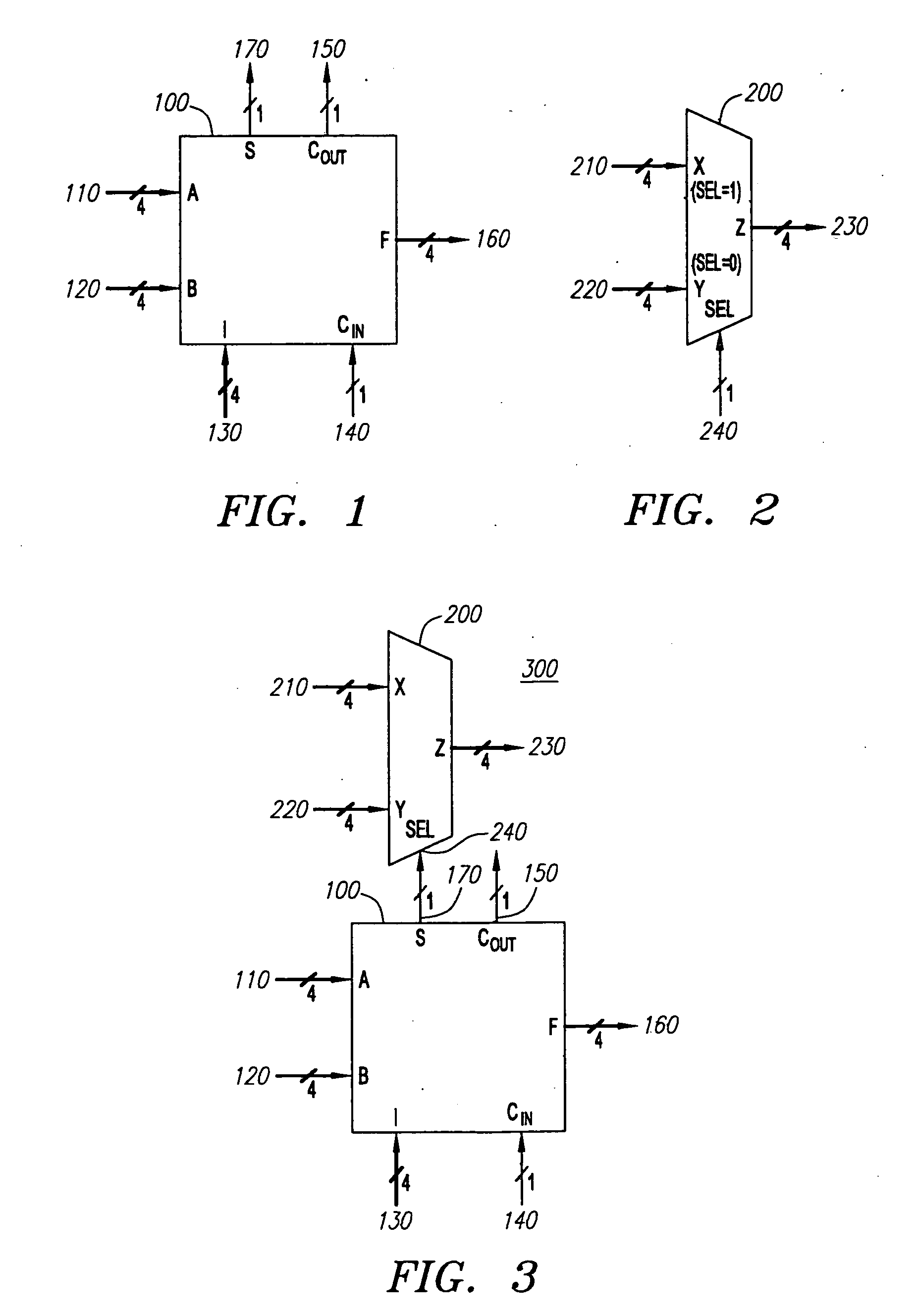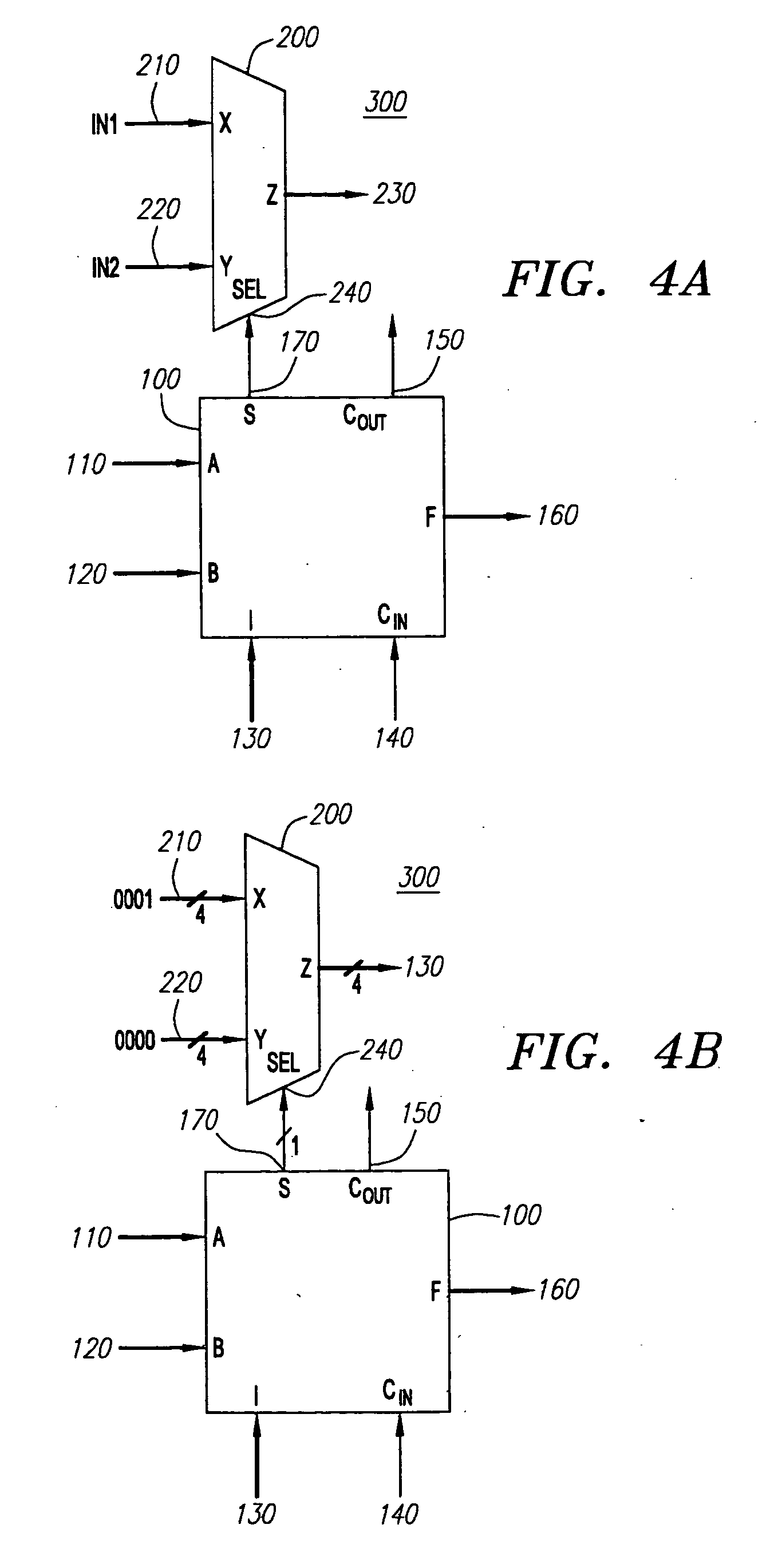Loosely-biased heterogeneous reconfigurable arrays
a heterogeneous, array technology, applied in the direction of logic circuits, pulse techniques, instruments using specific components, etc., can solve the problems of increasing the size of each element, reducing the total number of elements needed to implement an application, and reducing the “cost per element” of an interconnection that guarantees
- Summary
- Abstract
- Description
- Claims
- Application Information
AI Technical Summary
Benefits of technology
Problems solved by technology
Method used
Image
Examples
Embodiment Construction
[0082] Various embodiments of the invention will now be disclosed. The arrays discussed in these embodiments are constructed using ALUs and multiplexers as first and second types of processing elements. Those skilled in the art will appreciate, however, that other processing elements can be used in place of the ALUs, the multiplexers, or both. For example, the array can be constructed using lookup table based elements, product-term based elements, hardwired elements such as dedicated multiplier blocks, floating-point processors, integer processors, or other elements capable of implementing a combinatorial logic function.
[0083] Several of the following embodiments include a special purpose routing network. A special purpose routing network is a network that has multiple inputs and multiple outputs, where every input can be connected to at least one output, and every output can be connected to at least one input. However, a special purpose routing network lacks one or both of 1) the ...
PUM
 Login to View More
Login to View More Abstract
Description
Claims
Application Information
 Login to View More
Login to View More - R&D
- Intellectual Property
- Life Sciences
- Materials
- Tech Scout
- Unparalleled Data Quality
- Higher Quality Content
- 60% Fewer Hallucinations
Browse by: Latest US Patents, China's latest patents, Technical Efficacy Thesaurus, Application Domain, Technology Topic, Popular Technical Reports.
© 2025 PatSnap. All rights reserved.Legal|Privacy policy|Modern Slavery Act Transparency Statement|Sitemap|About US| Contact US: help@patsnap.com



